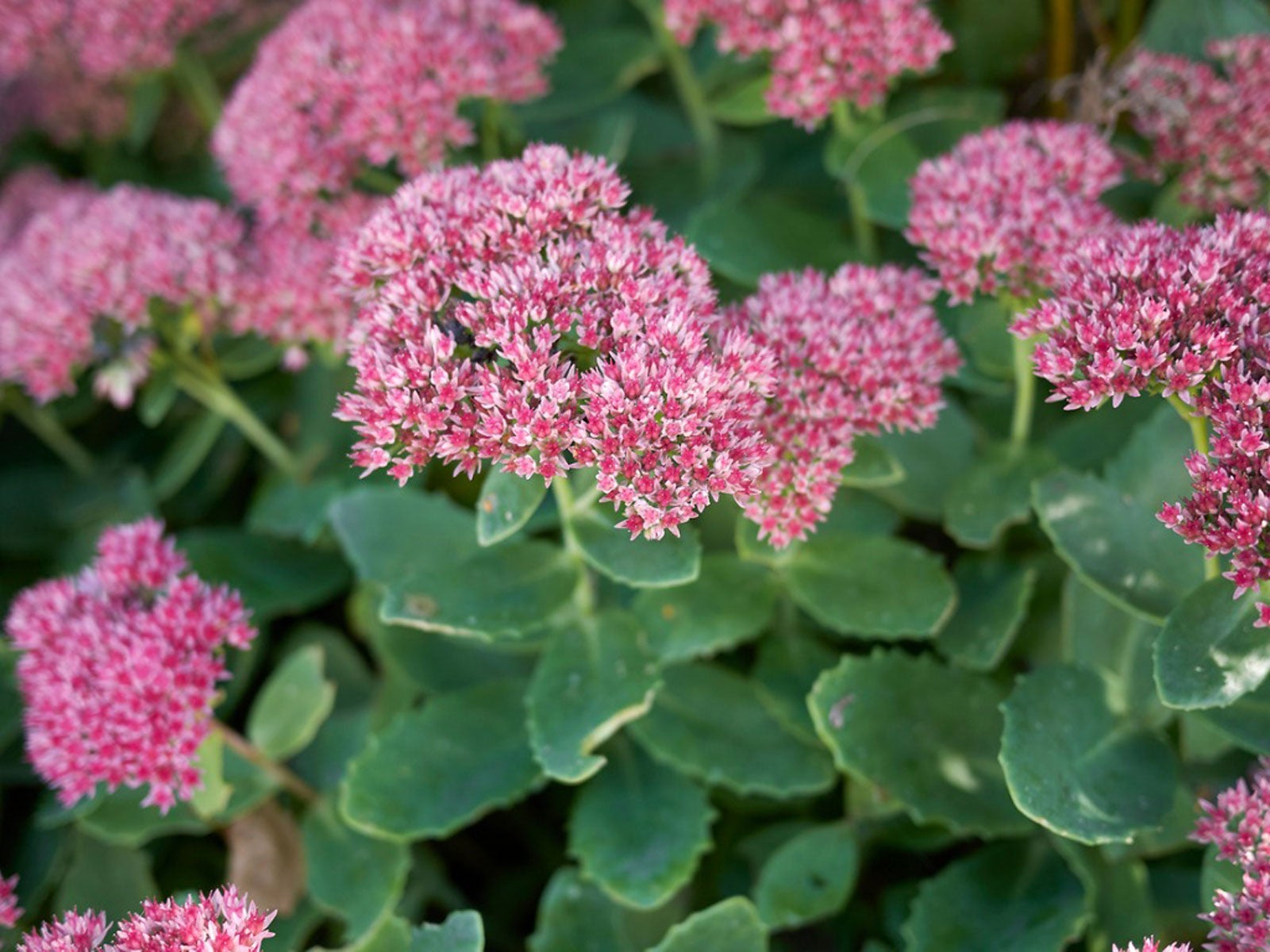Help, My Sedums Are Too Heavy: Tips For Supporting And Pruning Sedum


Succulents are my all-time favorite variety of plants, and sedum plants top that list. The larger sedum varieties, such as Autumn Joy, produce huge flower heads. By the end of the season you may find sedums falling over from the weight. Other causes of bowed sedum heads may be rich soil or overwatering.
About Sedum Plants
The Sedum family encompasses plants that trail, spread like ground cover, tower 2 or more feet (0.6+ m.), and those that just barely graze your ankles. The variety of the group allows the home gardener an opportunity to bring these relatively hardy succulents into their landscape. The thick leaves are coated with a waxy substance to help conserve water, making these plants tolerant of low moisture conditions. Sedum plants come back in spring and begin as ground hugging rosettes. Soon stems form and then starry clusters of flowers. In the larger sedums, these mass into a globe of purple, pink, salmon or white color.
Top Heavy Sedum
Some sedum plants can get a bloom cluster the size of a man's fist or even larger. The top heavy sedum can usually hold the huge flower up on the thick stock, but occasionally the flower bows to the ground or the stalk may even break. Weak stems are the result of overly rich soil. Sedum plants are tolerant of poor growing conditions and even thrive in sandy or gritty medium. Rich and soggy soils will cause the stems to bend and you will see your sedums falling over. To prevent this, you should mix in some sand to the site soil prior to planting the succulents. Sedums planted in low light areas may also grow spindly stems as the plant stretches for the sun. Ensure that these succulents get full sun exposure.
What to Do if Sedums are Too Heavy
Those big beautiful heads may get nodding due to a variety of conditions. You can move the plant in fall to a more suitable location or amend the soil. The short term solution is to stake the plant so the stem has support. Sedum flowers make interesting architectural additions to the winter garden and can be left on the plant until spring. They dry out in fall and have a textural appeal. Older plants respond well to division. Dig up the entire plant in the dormant season and cut the root and plant in half. Alternately, look for offsets or baby plants and pull them away from the parent plant. Once planted and established, these babies will produce quickly and better than the aged parent.
Pruning Sedum
Sedum plants respond well to pruning and tend to form a bushier plant in the next burst of spring growth. Use sharp pruners or garden shears to take the stems back to within an inch (2.5 cm) of the soil in early spring. Take care to avoid the new growth that is coming up. Pinching will enforce bushier plants. Pinch off the new growth near the soil and it will form a more compact stem and thicker growth. Pruning sedum succulents that are growing in low light conditions may help them form a sturdier stem. Cut the stem back to 6 inches (15.2 cm.). You will delay any blooms, but the stalk will grow thicker and help support the flowers when they come. In the end, if your sedums are too heavy on top, take the flower and bring it inside to enjoy as a cut bloom. They are a joy both indoors and out.
Sign up for the Gardening Know How newsletter today and receive a free copy of our e-book "How to Grow Delicious Tomatoes".

Bonnie Grant is a professional landscaper with a Certification in Urban Gardening. She has been gardening and writing for 15 years. A former professional chef, she has a passion for edible landscaping.